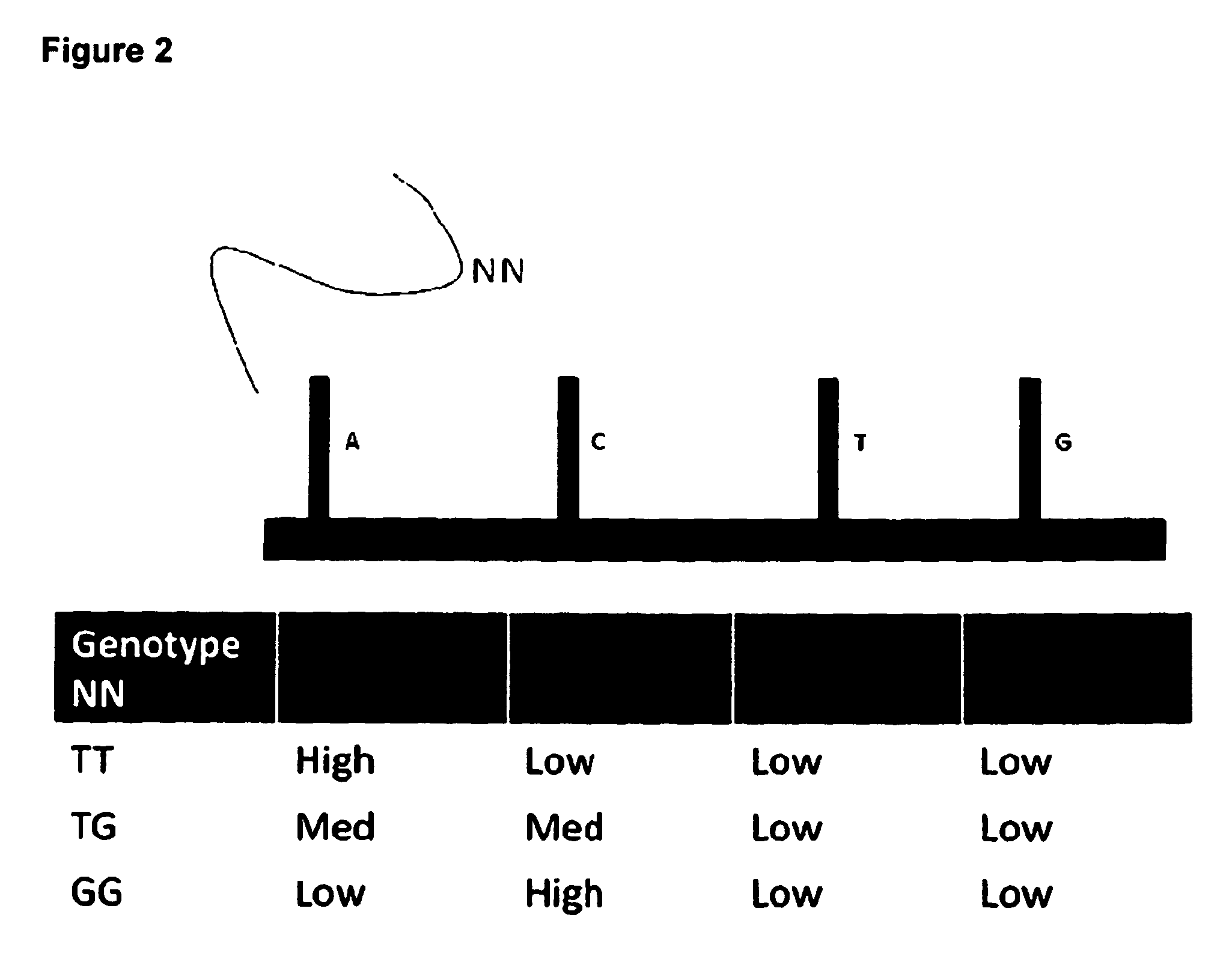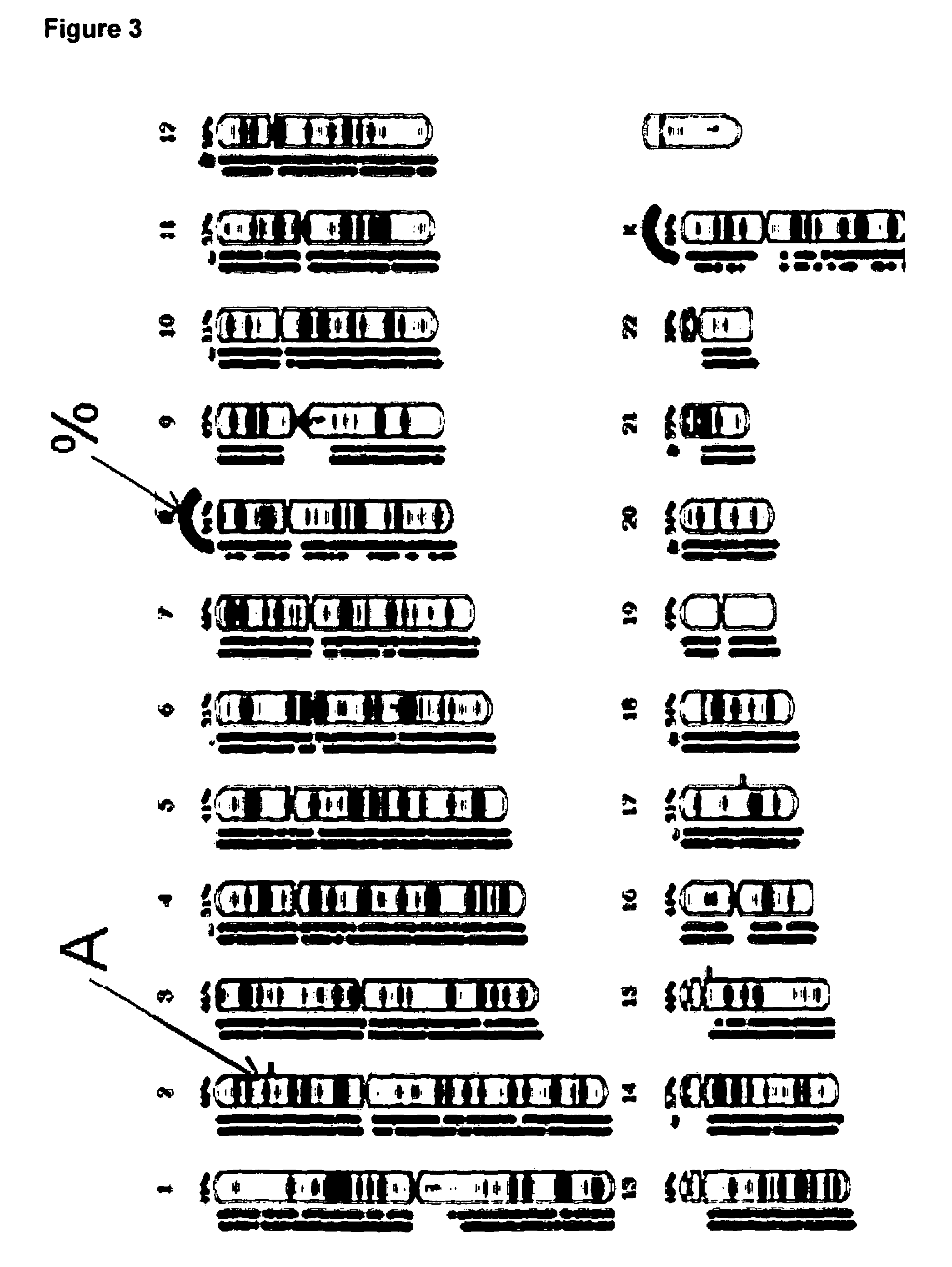Combined CGH and allele specific hybridisation method
a hybridisation method and allele technology, applied in hybridisation, biochemistry apparatus and processes, instruments, etc., can solve the problems of inability to provide information about unbalanced chromosomal changes, and standard arrays for array cgh are not capable of detecting snps, so as to reduce cross hybridisation
- Summary
- Abstract
- Description
- Claims
- Application Information
AI Technical Summary
Benefits of technology
Problems solved by technology
Method used
Image
Examples
Embodiment Construction
Use of SNP and CGH Probes to Detect UPD
Array Fabrication
[0101]A combined array comprising (i) ˜37,116 oligonucleotide SNP probes (both allele probes, triplicate) to detect 6,186 SNPs and (ii) ˜137,100 CGH probes was fabricated using ink jet in situ synthesis technology (see ref. 11) and was supplied by Agilent Technologies Inc.
[0102]The test DNA and reference DNA were labelled using the CytoSure labelling kit (OGT catalogue number 020020). Briefly, the DNAs are digested using Alul and Rsal for 2 hours at 37° C. Following digestion and denaturation of the enzyme by heating at 65° C. for 20 mins, 10 μl random primers and 10 μl reaction buffer were added and the mix incubated at 94° C. for 3 minutes. Following 5 minutes on ice, 10 μl of nucleotide mix was pipetted into the mix. 1 μl of Cy3-dCTP was then added to the test DNA mix and 1 μl of Cy5-dCTP was added to the reference DNA mix. The reaction was started with the addition of 1 μl of exo-free Klenow and incubation at 37° C...
PUM
| Property | Measurement | Unit |
|---|---|---|
| Tm | aaaaa | aaaaa |
| Tm | aaaaa | aaaaa |
| Tm | aaaaa | aaaaa |
Abstract
Description
Claims
Application Information
 Login to View More
Login to View More - R&D
- Intellectual Property
- Life Sciences
- Materials
- Tech Scout
- Unparalleled Data Quality
- Higher Quality Content
- 60% Fewer Hallucinations
Browse by: Latest US Patents, China's latest patents, Technical Efficacy Thesaurus, Application Domain, Technology Topic, Popular Technical Reports.
© 2025 PatSnap. All rights reserved.Legal|Privacy policy|Modern Slavery Act Transparency Statement|Sitemap|About US| Contact US: help@patsnap.com



